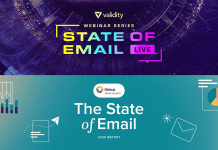Create your very own Auto Publish News/Blog Site and Earn Passive Income in Just 4 Easy Steps
In the world of digital marketing, email remains a cornerstone, steadfast in its ability to connect businesses directly with customers. In a world where instant communication is king, email marketing offers a unique blend of reach, relevance, and return on investment (ROI).
In this guide, we’ll walk you through building a robust email list and crafting compelling content to optimize deliverability and analyze performance metrics. With a focus on practical, proven techniques and cutting-edge trends, we aim to equip you with the tools and insights needed to elevate your email campaigns from mere communication to powerful conduits of engagement and revenue generation.
Before we dive in, let’s address the basics.
Why Email Marketing is Important
Email marketing stands out in the crowded digital marketing space for its efficiency and cost-effectiveness. It’s a direct line to your audience, offering unparalleled opportunities for engagement, brand building, and driving tangible business outcomes.
Let’s look closer at what email marketing affords you.
The Benefits of Email Marketing
Email marketing is a powerhouse in terms of benefits. It’s not just about hitting inboxes; it’s about opening doors to direct communication, enhancing brand visibility, driving web traffic, and fostering leads and sales conversions.
Statistics on Email Marketing ROI
Here are some compelling statistics that highlight the power and potential of email marketing:
- High Return on Investment: According to a study by the Data & Marketing Association, email marketing has an average ROI of $38 for every $1 spent, making it one of the most cost-effective marketing tools available.
- Extensive Reach: Radicati Group’s research shows that the number of global email users is set to grow to 4.5 billion by 2025, illustrating the vast potential audience that email marketing can reach.
- Preference for Communication: A survey by MarketingSherpa found that 72% of consumers prefer email as their main channel for business communication, suggesting that emails are a welcome form of communication for many people.
- Influence on Purchasing Decisions: A report from HubSpot indicates that 59% of respondents say marketing emails influence their purchase decisions.
- Welcome Emails Effectiveness: According to Email List Validation, welcome emails have an average open rate of 82%, making them an excellent opportunity for engagement right from the start of the customer relationship.
Email Marketing vs. Other Marketing Channels
Email marketing is often considered more effective than other marketing channels for several key reasons:
- Direct and Personalized Communication: Email allows you to send personalized messages directly to your audience’s inbox. This direct line of communication is not easily achievable with other channels like social media, where algorithms dictate visibility. Personalization can range from simple tactics like including the recipient’s name to more complex segmentation based on user behavior or preferences.
- Higher Engagement Rates: Emails tend to have higher engagement rates compared to other platforms. People who sign up for your email list have already shown interest in your content, product, or service, making them more likely to engage with your emails.
- Cost-Effectiveness: Email marketing is known for its high return on investment (ROI). With minimal costs involved in sending emails, especially when compared to the costs of running ads on other platforms, businesses can achieve a significant ROI even with a modest budget.
- Measurable Results: Email marketing platforms provide detailed analytics about open rates, click-through rates, conversion rates, and more. This data allows marketers to measure the success of their campaigns accurately and make informed decisions to optimize future emails.
- Control Over Content and Audience: Unlike social media platforms, where algorithm changes can affect who sees your content and when, email marketing gives you complete control over both the content and the audience. You can decide when to send an email, who receives it, and what it contains.
- Better for Long-form Content: Email is a suitable channel for delivering more substantial content that might be too lengthy for social media posts. This allows for more comprehensive communication, which can be particularly beneficial for B2B marketing.
- Segmentation and Targeting: Email marketing allows for advanced segmentation, where you can send tailored messages to different segments of your audience based on their behavior, preferences, and demographics. This level of targeting is harder to achieve with the same precision in other channels.
- Higher Conversion Rates: Due to its personal nature and direct approach, email marketing often sees higher conversion rates. People who open and read your emails are more likely to be further along in the customer journey and closer to making a purchase.
- Building Long-term Relationships: Email marketing facilitates the building of long-term relationships with customers by providing regular updates, valuable information, and personalized content, helping to foster loyalty and repeat business.
- Integration with Other Marketing Strategies: Email can seamlessly integrate with other marketing channels, serving as a part of a larger multi-channel strategy. For example, you can use email to follow up on leads generated through social media or drive traffic to your latest blog post.
How to Build an Email List
While it’s important to have a large email list, it’s even more important that your list is engaged and interested in what you have to say. Here’s how to build a list filled with interested potential customers.
Creating Compelling Opt-in Forms
Your opt-in form is your first handshake with potential subscribers. We’ll explore tips for making this handshake memorable, ensuring your visitors are compelled to join your email journey.
- Clear Headline: The headline should immediately grab attention and clearly state what the user will get by subscribing. It needs to be compelling and relevant to the audience’s interests.
- Brief Description: A short, persuasive description that explains the benefits of subscribing. This could include what type of content they will receive (e.g., newsletters, exclusive offers, updates), how often they will receive emails, and what unique value they offer.
- Minimal Fields: Request only essential information – typically just an email address. Sometimes, you might ask for a first name to personalize emails. Remember, the more fields you include, the lower the likelihood of someone completing the form.
- Eye-catching Submit Button: The submit button should be prominently displayed and labeled with action-oriented text like “Subscribe Now,” “Join Us,” or “Get Updates.”
- Visual Appeal: The form should be visually appealing and align with the website’s design. Use colors, fonts, and styles that stand out but still fit within your overall brand aesthetic.
- Privacy Policy Link: Include a link to your privacy policy to assure subscribers that their data will be handled securely and responsibly.
- Compliance with Regulations: Ensure that your form complies with relevant regulations such as GDPR (General Data Protection Regulation). This often means including a checkbox for users to acknowledge and agree to your privacy policy.
- Incentive Mention: If you are offering an incentive (like a free ebook, discount, or access to exclusive content), make sure it’s clearly mentioned in the opt-in form to increase the subscription rate.
- Mobile Responsiveness: The form should be easily accessible and functional on mobile devices, considering a significant portion of users access content on their phones.
- Confirmation Message: After submission, display a confirmation message or redirect subscribers to a thank you page. This assures them that the sign-up was successful and can provide further instructions, like asking them to confirm their email address.
- Double Opt-In Option: Although not mandatory, using a double opt-in process (where the subscriber must confirm their subscription via email) can help in maintaining a high-quality email list.
Offering Incentives for Subscriptions
Incentives can turbocharge your subscription rates. From discounts to exclusive content, make sure you incentivize people to sign up for your email list. Some strategies could include mentioning how many subscribers you currently have so people can get excited to see what all the interest is about.
Segmenting Your Email List
Segmentation is the art of speaking directly to the individual’s needs and interests. Here are some ways you can segment your list:
- Demographics: Segmenting by age, gender, income level, education, or occupation can help tailor your content to fit the specific needs and interests of different demographic groups.
- Geographic Location: Segmenting by country, region, city, or even climate zone can be particularly useful for businesses with a global audience or for sending location-specific offers and information.
- Purchase History: Segment customers based on their past purchases to send them targeted offers. For instance, you could send product recommendations similar to what they’ve bought before.
- Customer Lifecycle Stage: Differentiate between new subscribers, regular customers, and VIP clients. Each group requires a different approach – from welcoming emails to exclusive offers for loyal customers.
- Engagement Level: Segment users based on their interaction with your previous emails. This could include open rates, click-through rates, and email sharing. Tailor your content to re-engage inactive subscribers or reward highly engaged ones.
- Frequency of Purchases: Identify frequent buyers versus occasional purchasers. This can help in sending targeted promotions like loyalty discounts for frequent buyers, or re-engagement offers for less active customers.
- Abandoned Cart: Segment users who have added items to their cart but didn’t complete the purchase. You can send them reminders or special offers to encourage them to complete their transaction.
- Email Preferences: Segment subscribers based on their stated preferences, such as the frequency of emails they wish to receive or the types of content they are interested in.
- Seasonal Purchasing Behavior: Some customers may primarily shop during certain times of the year, like holidays or back-to-school seasons. Tailoring your messages to these seasonal shoppers can be very effective.
- Referral Source: Segment subscribers based on how they found your website or signed up for your list, whether it’s through social media, search engines, or referrals. This can help in crafting messages that resonate with their initial interest in your brand.
- Industry or Company Size: For B2B email marketing, segmenting by the subscriber’s industry, company size, or role can help in sending highly relevant and tailored content.
Designing Effective Email Campaigns
When it comes to designing effective email campaigns, there are a few things to keep in mind:
- Understand Your Audience: Before designing your campaign, know who your audience is. Use data from your email list to understand their preferences, behaviors, and needs. This will guide your content and design choices.
- Set Clear Goals: Define what you want to achieve with your email campaign. Whether it’s driving sales, increasing website traffic, or enhancing customer engagement, your goals should dictate the campaign’s structure and content.
- Write Engaging Subject Lines: Your subject line is the first impression. Make it catchy, clear, and compelling. It should spark curiosity or convey a sense of urgency to encourage recipients to open the email.
- Craft Persuasive Content: Your email content should be concise, engaging, and relevant. Use persuasive language that speaks directly to your audience’s interests and needs. Clearly communicate the value or benefit of what you’re offering.
- Incorporate Eye-catching Visuals: Use high-quality images, infographics, or videos that complement your text. Visuals can help convey your message more effectively and keep readers engaged.
- Optimize Email Layout and Design: Design your email to be visually appealing and easy to read. Use a responsive design that works well on both desktop and mobile devices. Organize content with headings, bullet points, and short paragraphs to enhance readability.
- Include Clear Calls-to-Action (CTAs): Your CTA should be prominent and clear, guiding readers on what to do next. Whether it’s visiting a website, making a purchase, or signing up for an event, make sure your CTA is unambiguous and compelling.
- Personalize Your Emails: Use the recipient’s name and other relevant data to personalize your emails. Personalization can significantly increase open rates and engagement.
- Segment Your Email List: Tailor your campaigns to different segments of your audience. This allows for more targeted and relevant messaging, which can lead to higher engagement rates.
- Test and Optimize: Use A/B testing to experiment with different subject lines, content, layouts, and CTAs. Analyze the results to understand what works best and continually refine your approach.
- Monitor Deliverability: Ensure your emails are reaching the inbox. Avoid spam triggers, maintain a clean email list, and follow best practices to keep a good sender reputation.
- Include Unsubscribe Option: Always provide a clear and easy way for recipients to opt out of your emails. This not only adheres to email marketing laws but also improves the quality of your email list.
- Analyze Campaign Performance: After sending out your campaign, analyze key metrics such as open rates, click-through rates, conversion rates, and unsubscribe rates. This data will provide insights for future campaigns.
How to Use Email Automation to Up the Ante
Imagine email automation as a highly-skilled, tireless team member in your marketing department. It’s like having a super-efficient assistant who never sleeps and always knows exactly what to say to your customers at the right time.
Now, why does this matter for ROI? Well, ROI is all about getting the most bang for your buck, right? When you automate your emails, you’re essentially putting your email marketing on autopilot, but in a very smart way.
- Personalized Drip Campaigns: Think of drip campaigns like a series of friendly, informative chats with your customers, guiding them along their journey with your brand. You set up these sequences once, and they automatically send out personalized emails based on specific triggers or actions the customer takes. For instance, if someone signs up for your newsletter, they automatically get a welcome email, followed by introductory content a few days later and perhaps a special offer after that. This personalized attention can significantly boost engagement and conversions without any extra ongoing effort from you.
- Targeted Email Sequences: It’s like knowing exactly what to say to each friend in your circle to keep them engaged. Some friends might love updates about your new products, while others might be more interested in industry news or tips. By segmenting your audience and automating targeted sequences for each segment, you’re sending more relevant, engaging content. More relevance usually means better open and click-through rates, which leads to higher ROI.
- Behavioral Triggers: This is where automation gets really cool. Imagine being able to send a perfectly timed email based on specific actions your customers take. For example, if a customer leaves items in their online shopping cart, they automatically get a gentle reminder email nudging them to complete the purchase. Or if they just made a purchase, they get a thank-you email and perhaps a recommendation for a complementary product. These timely, relevant emails can dramatically increase the chances of a sale.
- Efficiency and Consistency: With automation, you’re not spending hours every week crafting and sending emails. You set up the sequences and triggers once, and the system takes care of the rest. This efficiency reduces labor costs and ensures consistent communication with your audience, which helps in building a reliable brand image.
- Data-Driven Decisions: Automated email platforms usually come with analytics tools. You get to see what’s working and what’s not in real-time and make tweaks accordingly. This ongoing optimization process ensures that your email marketing strategy continuously improves, driving better results and higher ROI.
Email marketing, when executed with precision and creativity, is a formidable tool for boosting ROI. By embracing the strategies outlined in this guide, you can elevate your email campaigns to new heights, foster lasting customer relationships, and witness a notable increase in your ROI. Let the journey of transforming your email marketing into a cornerstone of your business success begin today!
Author Bio:
Digital Marketing Manager
Create your very own Auto Publish News/Blog Site and Earn Passive Income in Just 4 Easy Steps







